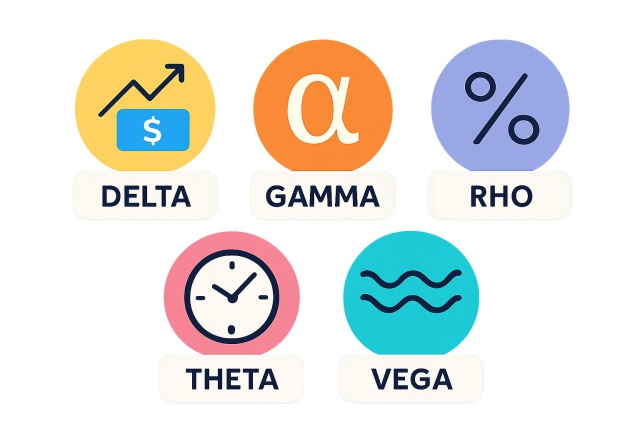
Delta Neutral Options Trading to Manage Risk
Master delta neutral options trading to reduce directional risk and achieve stable returns. This gui...

This guide lays out practical options day trading strategies to help you make the most of short-term market moves.
Day trading options basically means jumping in and out of options contracts all within the same trading day, hoping to catch those short-term price swings. It can be an exciting way to snag some quick profits but it’s not without its fair share of risks—market volatility and the tricky nature of options pricing can trip you up if you’re not careful.
This guide takes you by the hand through practical day trading options strategies with clear, step-by-step instructions that won’t leave you scratching your head. It covers all the must-know risk management techniques and points out handy tools that’ll have your back along the way.
Options are contracts that give the buyer the right but not the obligation to buy or sell an underlying asset at a predetermined strike price before the contract expires. Calls offer the right to buy while puts provide the right to sell.
Unlike the straightforward act of buying shares in stock trading, options trading involves contracts with quirks like expiration dates, time decay and leverage. For day traders, decisions hinge heavily on quick price swings, theta (which tracks time decay) and volatility—those unpredictable beasts that behave in ways stocks simply don’t.
It’s absolutely important to have a clear trading plan locked down. Jot down your strategy and set realistic daily profit and loss limits. Then stick to them like glue.
Day trading options demands quick thinking and razor-sharp accuracy in a way that longer-term strategies usually don’t. Trades get opened and closed in the blink of an eye—sometimes within minutes, sometimes a few hours—relying heavily on rapid market shifts and on-the-spot analysis to lock in gains before prices pull a fast one and move again.
Momentum Trading: Keep an eye out for stocks or options that are really running with a clear direction, and then ride that wave while it lasts.
Scalping: This one's all about quick hands—making a bunch of small trades here and there to snag tiny profits from minor price wiggles.
News-Based Trading: Jump on market news or events as soon as they drop, since these often shake up options prices quite a bit.
Technical Analysis-Based Trades: Trust those charts and indicators to sniff out setups that give you a decent shot at success.
Using Spreads: Work with debit or credit spreads to keep risks in check but still aim for a tidy profit—like having your cake and eating it too.
Momentum trading is essentially about catching the wave just as it’s building up steam. Traders keep a close eye on assets that are already making strong moves, hopping on board as these trends gather pace. The idea is pretty straightforward: buy high, sell higher. In my experience, it’s all about timing and being ready to act fast because momentum won’t wait around for anyone. Stick to the plan, watch the signals, and try not to get caught up in the hype is usually good advice here.
Keep an eye out for momentum plays by focusing on options that show a lively mix of high volume and rapid price moves. It is usually best to jump into trades once the trend is clearly established, hold your stops tight and have a game plan to exit before the momentum starts to fizzle out.
Scalping is all about hopping in and out of trades to snag those tiny gains as prices wiggle just a bit. Timing is absolutely key. You’ve got to keep a sharp eye on real-time charts and pounce fast to lock in those small wins, all while juggling risk with spot-on stop orders.
News-based trading is all about capitalizing on sharp price moves that pop up right after major announcements like earnings reports or economic data releases. Traders need to have their finger on the pulse with real-time news and be ready to jump in or out before the market digests the information. Volatility often shoots through the roof around these moments so keeping a cool head is key to avoid costly blunders.
When it comes to diving into technical analysis, having a game plan is half the battle won. Whether you are a seasoned pro or just dipping your toes in the water, these strategies can feel like trusty tools in your trading toolkit. From spotting trends to reading the subtle hints prices leave behind, let us break down some approaches that make the numbers come alive.
Charts and candlestick patterns often come to the rescue for day traders trying to pinpoint when to jump in or bail out of trades. Moving averages and RSI also help in this process. When you bring these tools into options pricing, technical analysis tends to highlight trades with a better shot at paying off.
Option spreads like debit and credit spreads combine multiple contracts with the goal of capping losses while still leaving some wiggle room for profit.
| Strategy Name | Risk Profile | Potential Profit | Best Use Scenario |
|---|---|---|---|
| Debit Call Spread | Limited loss with a hint of moderate risk | Moderate profits, but don’t expect to hit the jackpot | Perfect when the market’s leaning bullish but playing it safe because volatility isn’t on your side |
| Credit Put Spread | Limited loss and reasonable risk, nothing too wild | Profit mostly comes from that slow and steady premium decay | Works best in markets that are just nudging upwards or holding steady—not too exciting, but reliable |
| Iron Condor | Limited loss, generally low risk, quite the defensive play | Limited profit, but nicely steady | Great for when the market’s in a holding pattern, going sideways like a lazy river |
| Butterfly Spread | Low risk, though it can get a bit complex if you’re not careful | High potential payoff if the price behaves and stays in a tight range | Best when you’ve got your sights set on a very specific price target, like a hawk eyeing its prey |
| Straddle/Strangle | High risk with the chance of unlimited profit, like a wild rollercoaster ride | Big gains when volatility decides to throw a tantrum | Ideal for those nail-biting moments before major news drops or when the market just can’t sit still |

Day trader analyzing options charts and market data in a multi-monitor trading setup
Pick the right options contract by focusing on the underlying asset, strike price and expiration date that match your trading plan.
Analyze market conditions using charts and volume to find the best timing for your move.
Set clear entry and exit points with price targets and stop-loss levels before you start. You’ll thank yourself later.
Keep your position size in check to manage risk and protect your capital.
Use stop-loss orders or mental stops to guard against unexpected reversals during the session.
Stay focused on the trade and be ready to adjust stops or exit early if the market turns sour.
Close your position before the market closes to avoid overnight surprises and secure profits or limit losses.
Make the most of your trading platform’s handy tools like hotkeys and alerts plus lightning-fast order execution. These can really help you stay cool and confident when the market decides to throw a curveball.
To really make it in day trading you’ve got to guard your capital like it’s the family silver. That means setting clear stop losses and picking your position sizes with care. You should also spread your trades across various assets or strategies.
"Careful risk management is really the unsung hero behind any lasting success in day trading options. It’s not just about nailing those winning trades but, more importantly, about protecting your chance to stay in the game for the long haul."
Learning from mistakes is a game changer in day trading options. Keeping a trading journal gives you the chance to look back at each trade, catch sneaky errors and fine-tune your strategy little by little. Over time this kind of honest reflection sharpens your skills and builds up your confidence. It makes it easier to dodge the same pitfalls and grow into a more disciplined trader.
Struggling to improve your trading performance? Edgewonk's advanced analytics tools are designed to give you the edge you need.
With detailed trade journaling, robust strategy analysis, and psychological insights, you'll gain a comprehensive understanding of your strengths and weaknesses. Don't miss out on this game-changing opportunity.
Traders, it's time to elevate your game. Edgewonk is the ultimate trading journal software designed to empower you with data-driven insights and personalized strategies. Take control of your trading journey and maximize your potential.
16 articles published
With 20 years of experience in derivatives trading, she specializes in options strategies and volatility trading, known for her innovative approaches to portfolio hedging.
Read Posts
Master delta neutral options trading to reduce directional risk and achieve stable returns. This gui...

Unlock the power of options chain analysis with TrendSpider’s automated and visual tools to make sma...

Demystify option trading Greeks with our simple guide. Learn how Delta, Gamma, Theta, Vega, and Rho...

Discover the essentials of options trading for dummies. This beginner-friendly guide explains key te...
